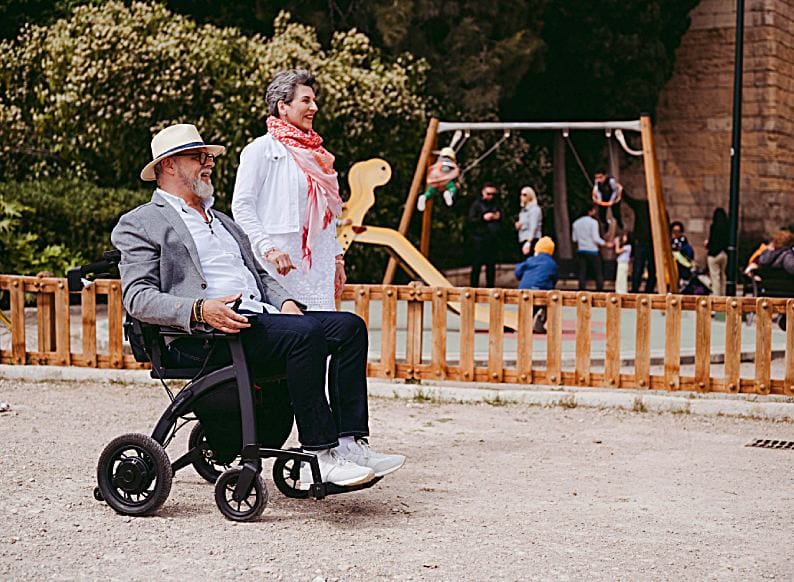words Alexa Wang
Mobility in today’s fast-paced society refers to freedom, independence, and quality of life rather than merely the capacity to move. Whether due to age, injury, or disability, mobility challenges can impact anyone. Fortunately, with advancements in technology and design, a wide array of mobility aids is available to support those who need them. But with so many options, how do you find the right one for your needs? Here are seven useful tips to guide you on your quest to find the ideal mobility aids.
1. Assess Your Needs
The first step to finding the perfect mobility aid is to understand your specific needs. Are you looking for something to support your balance during walks, or do you need assistance with longer distances? Identifying the primary purpose your mobility aid will serve is crucial. Consult with healthcare professionals, such as physiotherapists or occupational therapists, who can provide valuable insight into what type of aid will best suit your situation.
2. Prioritize Comfort and Ease of Use
Comfort is key when choosing a mobility aid, as it’s likely something you’ll be using quite often. Test different models to see what feels right for you. Consider the grip of a walking stick, the seat of a wheelchair, or the handlebars of a walker. The ease of use is also important; ensure the mobility aid is easy to maneuver, fold, and store as needed.
3. Consider Your Lifestyle
Your lifestyle should heavily influence your choice of mobility aid. Active individuals may need something lightweight and portable, while others might prioritize durability for everyday use. Think about your routine and the environments you frequent. Will you often be outdoors, navigating uneven terrain, or mostly indoors? Answering these questions can help narrow down your options.
4. Seek Adjustable Options
One size does not fit all when it comes to mobility aids. Look for options that can be adjusted to suit your height and body frame. Adjustable features not only enhance comfort but also ensure the aid is used correctly, reducing the risk of strain or injury.
5. Explore Mobility Products on The Market
Gone are the days when mobility aids were limited to basic wheelchairs and walking sticks. With the medical industry advancing rapidly, a vast range of mobility products is available on the market. From traditional walking sticks and crutches to modern electric scooters and power wheelchairs, there’s an aid for almost every need. Take the time to research and explore these options. Online forums, user reviews, and recommendations from health professionals can offer insights into different products’ benefits and limitations. This step is crucial to finding an aid that not only meets your functional needs but also fits within your budget and lifestyle preferences.
6. Safety Features are Paramount
Safety should be a top priority when evaluating mobility aids. Check for features like non-slip grips, sturdy frames, and reliable brakes. For powered devices, consider battery life and emergency shutdown capabilities. A well-designed mobility aid should provide stability and confidence, and not pose additional risks.
7. Plan for the Future
When choosing a mobility aid, it’s essential to not only consider your current needs but also to project into the future. Anticipating how your mobility might change over time can save you from the need for frequent replacements or adjustments. Mobility tends to evolve, either due to the natural aging process, the progression of a medical condition, or as part of recovery from surgery or injury. Therefore, invest in a mobility aid that is flexible and can adapt to increasing levels of support. Look for products that offer modular designs, facilitating easy adjustments, expansions, or the addition of supportive accessories. This forward-thinking approach ensures that your chosen mobility aid remains effective and supportive as your needs mature and change, offering you a more sustainable, long-term solution. This strategic planning can prove incredibly cost-effective, preventing the additional expense and hassle of repeatedly sourcing new aids. Additionally, familiarizing yourself with the potential for technological advancements in mobility aids can keep you informed about future options that may offer even greater assistance or convenience. Remember, planning for your future mobility needs doesn’t just mean selecting the right product now—it means considering how well it can grow and adapt with you over time.
Finding the ideal mobility aid is a personal and vital decision that can significantly impact your daily life. By taking the time to understand your needs, lifestyle, and the options available, you can select an aid that provides the support and independence you seek. Remember, the right mobility aid is out there for everyone. With patience and research, you can find yours and take a significant step toward mastering your mobility.





















